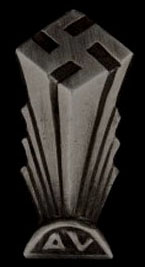


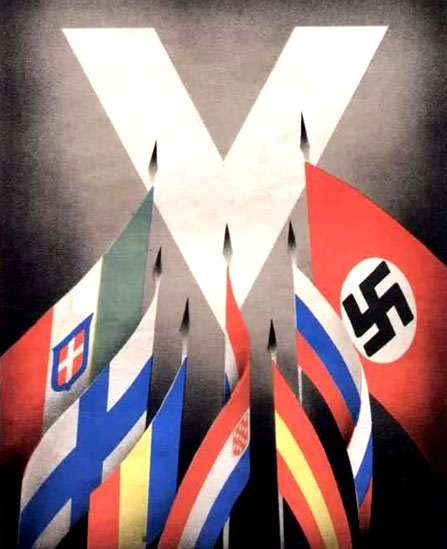






Page two reveals pictures and information previously unknown to even me, and I've been studying this topic for years. Seeing black Africans proudly wearing the iconic eagle and swastika on their breasts speaks a thousand words. Or various Asians, like Indonesians, Thai, Chinese, and even Koreans, all sporting the Swastika and an Axis uniform, nearly shocks the eye in bewilderment.
Men and women of all races fought against one enemy. What a criminal shame that their deeds and deaths have been hidden from us today. But no more, one can hide the truth, but not forever, eventually, it will surface.
Of course, the enemies of truth could say 'well, they were forced by the evil Germans to fight for them.' But that lie, like all their lies, won't hold up to scrutiny. Especially since the majority of the pictures you see here of non-whites, like their European counterparts, are volunteers. It is up to you to educate yourself further. These pages are only a glimpse of the rage, sorrow and wonder that awaits you, if you decide to look deeper. It will be a long journey, but we're all on it together. The journey of a lifetime, that's for sure.

'For th' old Romane valor is not dead,
[Above: Fantastic early art featuring Mussolini and Mother Italy.]
[Above: A beautiful Italian postcard honoring the pact between Germany and Italy.]
'Let man face and know his own soul, and our problem is solved. One man can do much. A group, spiritually united, can perform miracles.'
It's an interesting fact that Mussolini -- at the age of 39 -- became the youngest head of government in Italy.
[Above: Benito Amilcare Andrea Mussolini (July 29, 1883 - April 28, 1945).]
________________
[Above: Claretta Petacci (February 28, 1912 – April 28, 1945).]
Mussolini died as he had lived -- like a man. He opened his jacket to his murderers and said boldly, 'Shoot me in the chest!'
It goes on... In an act of homosexual depravity, these human monsters sodomized Mussolini's corpse. They urinated on it and kicked and beat his body until it was barely recognizable as human. Only when reading about the most heinous and evil serial killers does one hear about similar depraved acts.
The bodies were thrown into a heap in a suburban square in the city of Milan. At least one British secret service member and numerous communists whipped a crowd into a frenzy. They attacked the corpses in all manner imaginable. Eventually the bodies were hoisted up and hung upside down on meat hooks! An American eye witness described the crowd as 'sinister, depraved, out of control'.
I pondered back and forth on whether I should post the shocking, disgusting and deeply disturbing pictures of Mussolini and Claretta's mangled bodies. Like many people who have surfed the internet for years I've seen some truly disturbing stuff. Yet, the death photos of Mussolini and his love I find more vile than anything else. These disgusting and evil images stain my computer as they did my mind. To see such a powerful, intelligent and most of all human man desecrated in such a way left an impression with me forever.
The fact is I didn't want these pictures on Mourning the Ancient. But alas I decided, after seeking the advice of an Italian comrade, that these pictures should be shown. They show the inhuman evil of the Allies and their communist comrades. The unrestrained brutality toward those who were helpless and had surrendered. If you have it in you, click on the link below. These images speak volumes and volumes of truth about the 'Good Guys'.
The great and complex Benito Mussolini tells one last tale to us, his spirit soaring free, his body defiled, broken, but alas, he is not beaten.
No one cares about the monsters who murdered Mussolini. No one cares about these murderous communists. They are truly dead.
No you don't. No one does. Because Mussolini's murderers are truly dead. And all of those things I asked you about his killers above are done for Mussolini -- all around the whole wide world.
Mussolini Ha Sempre Racione!
[Above: The tomb and shrine to Mussolini as it stands today. Thousands visit his tomb yearly, expressing their love and admiration by signing a guest book.]
If you haven't already, I highly recommend you read:
________________
'Let me say now that what is occuring in the United States is one of the most colossal mystifications in all history.
[Above: 'Tre popoli una guerra!' = 'Three peoples one war!' postcard. One of my favorite Italian postcards.]
[Above: 'Anch'egli difende la vostra famiglia!' = 'He too defends your family!']
[Above: 'La Germania veramente vostra amica' = 'Germany really is your friend' -- Click to see more.]
[Above: 'Victoria' = 'Victory']
[Above: Italian soldiers of the Axis.]
[Above: Recruitment poster for the Italian 'Black Brigade', it says: 'Pronti, Ieri, Oggi, Domani al Combattimento per L'onore D'Italia' = 'Ready, Yesterday, Today, Tomorrow in the Fight for the Honor of Italy'.]
[Above: Waffen-SS Croatian sleeve shield]
'Croatian bombers took part in raids over Moscow in the winter of 1941-42 and Hitler singled them out as a model for the other allies to follow'
In one of the greatest tragedies of the war, because of the German traitor Generalfeldmarschall Paulus, these men were forced to surrender at Stalingrad. Of the 900 Croatian soldiers who laid down their arms at Stalingrad the majority died in communist death camps and death marches. (The Germans fared for worse, of the nearly 91,000 German prisoners captured in Stalingrad, 86,000 were murdered!!!)
A high level of respect existed between the Croatians and Germans. This esteem went back hundreds of years between the two peoples.
The Croatians proved to be extremely dependable and excellent soldiers. Adolf Hitler himself was impressed by their behavior under fire.
'...in the autumn of 1944, Hitler protected his vulnerable ally despite the strategic disadvantages it cost him. [against a huge communist offensive]'
Like so many millions and millions of soldiers and civilians after the war, an untold number of innocent Croatians were murdered by the Allies. Here is an astounding quote for you to ponder:
'Their Croatian allies suffered a much harsher fate: most of them were gunned down in a series of mass executions at the end of May. In terms of numbers, these victims were equal to Croatia's losses in the first four years of the war. The Croatian armed forces recorded about 65,000 soldiers killed and missing in action by May of 1945. An additional 60,000 became the victims of mass murder...'
Croatia would be harshly occupied by the communists for more than four decades. Not until 1991 would it achieve full independence.
The noble Axis country of Croatia never betrayed Germany, even as things fell to ruin, and was in fact one of the last Axis countries in Europe still fighting at the end. Their courage and sacrifice will never be forgotten.
[Above: Two sleeve shield variations. These brighter examples of Waffen-SS sleeve shields were not meant for combat, but more for RAD work service and presentation.]
[Above: Ante Pavelic]
Ante Pavelic (July 14, 1889 – December 28, 1959) was a Croatian nationalist who led the Ustaše movement and the Independent State of Croatia (NDH) and was a loyal ally to the Axis during WW2.
Ante Pavelic was born in the Herzegovinian village of Bradina, which at that time was part of the Austrian-Hungarian Empire. He came from humble beginnings and his parents moved around searching for work, one job they found was working on the railroad.
Although Pavelic was a Roman Catholic one of the primary schools he attended was a Muslim school in the village of Jezero. Pavelic also attended a Jesuit primary school in Travnik. Pavelic's awakening to Croatian nationalism happened in his youth on a visit to the town of Lika where he heard people speaking Croatian, and realized it was not just a language of peasants. The nationalist ideologies of Ante Starcevic, the leader of the Party of Rights, and his successor Josip Frank greatly influenced Pavelic while he attended school in Travnik.
After finishing school Pavelic became a lawyer and also a politician of the Croatian Party of Rights, fighting for the right for an independent Croatia. He called on Croatians to revolt against Yugoslavia in the 1920s. Croatia had been forced to be absorbed by Yugoslavia unfairly after WWI and a growing sense of nationalism swept over Croatians by this time. Pavelic had even considered the possibility of Croatia becoming an Italian protectorate separate from Yugoslavia.
Pavelic was forced to leave his homeland and his people when King Alexander I of Yugoslavia banned all political parties in 1929 and became a royal dictator over the Kingdom of Serbs, Croats and Slovenes.
Pavelic was tried and sentenced in absentia for trying to undermine the Yugoslav state, he was sentenced to death. Pavelic was welcomed in fascist Italy and it was there that he founded the Ustaše, a Croatian nationalist movement with the goal of creating an independent Croatia. The Ustaše were very active in their resistance against the Yugoslav dictatorship. They were accused of things such as train bombings, assassinations and creating an uprising in 1932. In 1934 three Croatians and a Bulgarian traveled to France during a visit by King Alexander and succeeded in assassinating the royal dictator. France sentenced Pavelic to death in absentia. Italy had to answer to the pressure to punish him and gave him a light sentence of 18 months.
Finally in 1941 the Axis invaded Yugoslavia and Croatia at last became independent again. Pavelic became Croatia's beloved leader and he fashioned a nationalist government after National Socialist Germany and fascist Italy called the Independent State of Croatia (NDH).
[Above: Ante Pavelic's image on a 1943 Croatian postage stamp]
Croatia remained a faithful ally to Germany until the bitter end and beyond, as it was the last country fighting the Allies, even continuing on after Germany surrendered.
Pavelic knew that surrendering to the communists was the worst thing that could happen and so he ordered the tens of thousands of Croatian soldiers and civilians to retreat to Austria to surrender to the British. The Allies inhumanely turned them back and right into the slobbering mouth of the communist beast. Thousands of both soldiers and civilians were murdered, the ones that were lucky enough to live were put in brutal forced labor camps. It was a genocide of an untold number of Croatian people.
Pavelic reported himself to American intelligence, but neither they nor the British arrested him. Many members of the NDH were murdered after a one day trial! At the trial no witnesses were called to testify and no evidence was provided. This was typical of the Allied show trials after the war.
Luckily able to escape the brutality of the victors, Pavelic eventually made his way to Argentina. Starting up life in a new country as a political refugee was hard and this former leader of an entire country had to work as a bricklayer. He stayed politically active still wanting to free Croatia once again. He joined a Croatian nationalist organization called Hrvatski Domobran (Croatian Home Guard). Despite it all, his determination and love for his people never diminished.
A former Ustaša named Branko Benzon was personal friends with Juan Perón's wife Evita and Pavelic was introduced and hired by the Argentinean president as a security advisor. He also later owned a construction company. In 1950 he, along with 34,000 other Croats who had fled the brutal communists, was granted amnesty and was able to remain in Argentina.
[Above: Pavelic and his family, Buenos Aires.]
Pavelic announced on April 10, 1951 (the 10th anniversary of the Independent State of Croatia), the Croatia State Government, a government in exile. He remained active in his fight against the communist regime that had subjugated his homeland. Many Ustaše continued to flee the hell that became Croatia and united under Pavelic in Argentina.
In an act of cowardice that was common amongst communist partisans and those who fight against National Socialism, an assassination attempt was made on Pavelic's life on April 10, 1957, the anniversary of the NDH. The coward shot him in the back as he was getting off of a bus. Despite being terribly injured with a bullet lodged in his spine, he refused to stay in the hospital. With Perón no longer president, Pavelic no longer had protection and the new corrupt government granted the communist country of Yugoslavia an extradition request.
But Pavelic wouldn't go down so easy. He left for Chile for four months and then moved to Spain. Even after having been wounded so badly, Pavelic continued working to re-establish the Independent State of Croatia. Before his death he named Stjepan Hefer as his successor to lead the Croatian Liberation Movement. Sadly Pavelic died on December 28, 1959 in a hospital in Spain at the age of 70 from complications from the assassination attempt. He is buried in the San Isidro Cemetery in Madrid. Croatians still hold masses in his honor to this day. A true patriot until the end.
[Above: 1944 postal souvenir sheet and other documents autographed/signed by Ante Pavelic.]
[Above: Ante Pavelic meets Adolf Hitler. (.MP4 - 3.30)]
[Above: Ante Pavelic in Northern Croatia newsreel, 1944. (.MP4 - 40.6 MB)]
[Above: Croatian volunteers in the Waffen-SS.]
[Above: Croatian Waffen-SS volunteers in an oath taking ceremony. Note the German style helmets with Croatian decals]
Ustaša oath:
'I pledge to God almighty and everything sacred to me that I will uphold my Ustasha principles
[Above: Croatian volunteers on parade.]
[Above: Badge of the Croatian Air Force Legion, or 'Hrvatska Zrakoplovna Legija', which was a volunteer section of the Luftwaffe.]
[Above: This Croatian pilot wears the badge above, plus an Iron Cross 1st Class and a German flying award.]
[Above: Croatian pilots.]
[Above: Croatian pilot.]
[Above: This is the Do 17Z-2 flown by a Croatian volunteer squadron on the Eastern front.]
[Above: This little beauty is a member of an Ustaše youth group. Note the distinctive 'U' standing for Ustaše on her cap.]
[Above: Croatian postage stamps (block of four) honoring its Axis partners fighting communism. Click on image to enlarge and see other related items!]
'The Croats are a proud people.
[Above: British Free Corps sleeve shield]
[Above: This is a different sleeve shield design for British Waffen-SS volunteers. This was taken from a map produced by the SS (Germanische Leitstelle, Amtsgruppe D of the SS-Hauptamt), being one of the last documents produced by the SS foreign volunteers recruitment office.]
In March of 1945, the men of the British Free Corps were deployed alongside their Scandinavian comrades in the 11th Waffen-SS division Nordland. The majority of the men were scattered throughout the division, but there was a squad-sized unit of BFC deployed with the 3rd company of the reconnaissance battalion. This unit was composed of mainly Swedish Waffen-SS volunteers.
The historian Richard W. Landwehr wrote:
'The Britons were sent to a company in the detachment that was situated in the small village of Schoenburg near the west bank of the Oder River.'
On March 22, the company was nearly overrun by an advance element of the Soviet army, which had accidently stumbled on their position. During the chaos and surprise the men of the British Free Corps and their comrades quickly gained the upper hand and launched a vicious counterattack, which forced the Soviets to retreat.
[Above: British Free Corps uniform cuff band.]
[Above: British Free Corps collar tab.]
[Above: British Free Corps pamphlet written by British volunteer Frank McLardy explaining the aims and promises of the unit. Circa February 1944.]
'It came as a great shock to me when I heard that England and Soviet Russia had become allies.
[Above: British John Amery in 1932. Amery was the spiritual father of the British Free Corps. He was the son of the British Secretary of State for India. He also had fought on Franco's side in the Spanish Civil War. He was a passionately loyal and dedicated fighter for truth. He was sentenced to death after an 8 minute trial! He was hung to death on 12-29-1945. Albert Pierrepoint, the man who hung him, described Amery as 'the bravest man that he ever had to hang'.]
[Above: SS-Mann Kenneth Berry and SS-Sturmmann Alfred Minchin, with German officers, April 1944.]
[Above: Men of the British Free Corps. Note the great collar tab shot.]
[Above: Waffen-SS recruiting poster for the British Free Corps.]
[Above: Another Waffen-SS recruiting poster for the British Free Corps.]
[Above: And yet another Waffen-SS recruiting poster for the British Free Corps.]
[Above: John Amery after being captured in Milan, Italy at the end of the war.]
[Above: As above.]
[Above: John Amery Speaks - a collection of seven broadcasts from 1942.]
[Above: John Amery Speaks - page within.]
[Above: England and Europe by John Amery - reprint of rare 1943 booklet.]
[Above: England and Europe by John Amery - page within.]
[Above: England and Europe by John Amery - pages within.]
[Above: British Volunteers of the Waffen-SS, 1943-1945 (Modern day booklet).]
[Above: British Volunteers of the Waffen-SS, 1943-1945 - pages within.]
[Above: German poster: 'Deutschland wird siegen!' = 'Germany will win!']
[Above: Greece 1943, members of the Free Arabian Legion. Courtesy of the Bundesarchiv.]
[Above: Something must have been REAL funny!!!]
[Above: An African volunteer of the Free Arabian Legion.]
[Above: A rare photograph of both a member of the Free Arabian Legion and a Cossack Wehrmacht volunteer.]
[Above: An African officer of the Waffen-SS, complete with SS camouflage smock and helmet cover.]
[Above: A German with his African comrade.]
[Above: This picture was called 'Brennero Vipiteno' and said to be from 1938. 'Vipiteno' is an Italian locale in South Tyrol in northern Italy. So I'm not sure if these men are some sort of visiting dignitaries or what?...]
[Above: Check out this guy's cape and shades.]
[Above: Here is a beautifully done envelope sent from Dresden on February 22, 1938. It was sent registered (Einschreiben) by airmail (Luftpost) via Cairo, where it was sent on to its destination -- Tanzania. Click to enlarge and see the reverse of the envelope.]
[Above: This flag's symbolism is as follows:
[Above: This Indonesian volunteer was part of the Dutch Waffen-SS Grenadier-Brigade Landstorm Nederland. It is not known how this man ended up in Europe, but there is a story behind the photo, which is as follows:
[Above: Japanese army interpreter (right) and a Korean policeman with a group of Korean civilians evacuated from the area around Lake Khasan, Korea, 1938. Lake Khasan is a small lake in Russia, on the border with North Korea and China. The lake, described as 'the tight corner where the territories of Korea, Manchuria, and Russia meet', was the site of the Battle of Lake Khasan in the summer of 1938.]
[Above: France, 1945. Korean Wehrmacht volunteers taken prisoner by the Allies.]
[Above: Waffen-SS Romanian arm shield patch, for non-field use.]
'In Romania our allies of yesterday were now the enemy. I must state, however, that there were entire Romanian regiments that fought at our side until the end. In February 1945 at Schwedt [Germany] on the Oder I had a Romanian regiment under my command...'
[Above: Romanian Feldpost postcard from 1944. It basically says 'Germany and Romania - comrades today and forever'.]
[Above: The Heroes of Europe are hailed in this marvelous courtyard in Romania.]
[Above: Corneliu Zelea Codreanu (September 13, 1899 - November 30, 1938), leader of the Romanian Iron Guard, revolutionary, author and martyr. One of the greatest men to ever emerge from our Struggle.]
'Yes, there was a hero in front of me, in the mythical and historical sense of the word.
'He was one of the most righteous, noble and pure figures...'
[Above: Codreanu and his wife Elena Ilinoiu Codreanu]
[Above: A beautifully done rendition of Codreanu. This image shows an example of Codreanu's signature. Click on the image to see another example of his signature for study purposes.]
[Above: Letters addressed by Corneliu Zelea Codreanu to the people who wrote and donated money to him during his time in the Vacaresti prison (October 9, 1923 - March 30, 1924). Click to read!]
[Above: Legionary stamp bearing the symbol of the Iron Guard over a green cross--this stood for one of its humanitarian ventures.]
[Above: Iron Guard ink postage stamp cancels. Circa 1940.]
[Above: Horia Sima (July 3, 1907 - May 25, 1993). Sima became the second leader of the Iron Guard in 1938 after Codreanu was murdered. Sima was a staunch patriot and lifelong fighter of Communism.]
[Above: Romanian soldiers on the Eastern Front. Until the fiery end days of WW2, Romania was a staunch ally of Germany and the Axis. Eventually, like all of Eastern Europe, the communist death machine would pour into the region, resulting in utter chaos and treachery. Many Romanian and German soldiers would have to fight their way out of the country as the communists gained control and ordered that Romanian guns be turned on their former Axis allies.]
[Above: Romanian postage stamps from October 11, 1941. This set of stamps honor their German comrades on the eastern front. You'll also notice the set has been overprinted with 'ODESA 16 Oct. 1941', this is in honor of the siege of Odessa, which lasted from August 8th until October 16th 1941. Click to enlarge and see the rest of the set!]
[Above: Romanian postage stamp sheet honoring their soldiers and German comrades on the Eastern Front, circa October 16, 1941]
[Above: A close-up of one of the stamps above. It says: 'The holy war against bolshevism']
[Above: Envelope from 1941. Note the 'Odesa' overprints on some stamps honoring the great siege and liberation of the Ukrainian city of Odessa, which was a communist stronghold.]
[Above: Ion Victor Antonescu (June 15, 1882 – June 1, 1946) was the Prime Minister of Romania. He began his destiny as a soldier and rose to the heights of national hero, regaining much land for his country which had been previously stolen (Bessarabia and Northern Bukovina). After suffering terrible losses on the Eastern Front, he was forced to sue for peace with the great communist monster--but it came too late. After the war Antonescu was murdered along with other Romanian politicians by communist death squads after being 'charged' in a kangaroo court.]
[Above: Adolf Hitler greets Marshal Ion Antonescu.]
[Above: Adolf Hitler greets a Romanian officer who lost his hand at Stalingrad. From left: Marshal Ion Antonescu, Joachim von Ribbentrop and Secretary of State Otto Meissner. Castle Klessheim
in Salzburg, April 12, 1943.]
[Above: Peasants from Craiova, Romania's 6th largest city, salute Marshal Ion Antonescu. Circa November 1943.]
[Above: A postage stamp of November 1, 1942 honoring fellow Axis leaders Adolf Hitler and Mussolini. The top of the stamp bears the picture of Romanian King Michael, while the bottom picture is of Prime Minister Ion Antonescu. Last but not least, two faces that need no introduction, Hitler is on the left and Mussolini's on the right. Click here to see the rest of the set!]
[Above: Here is a poster advertising a soccer/football match between Germany and Romanian.]
[Above: Here is an SS volunteer who has been identified as being from the Romanian region of Transylvania (seen here in front of the MG-42 machine gun).]
[Above: Northern Transylvania, August 1944. The words painted on the sign:
'Sieg oder Sibirien! Die Wende kommt - DURCHHALTEN - Unsere Treüe züm Führer Adolf Hitler verbürgs den ENDSEIG!'
Basically means
'Victory over Siberia! The turning point comes - PERSEVERE - Our loyalty to the Führer Adolf Hitler brings the FINAL VICTORY!']
[Above: Sigmund Heinz Landau, born in Transylvania, he volunteered and fought in the Luftwaffe and the Waffen-SS. This photo shows Landau in Minsk, 1942.]
[Above: Landau's book, originally published in 1985 and again published in 2015.]
Men from Transylvania took part in the terrible battles of the Axis defense of Budapest, where every man and weapon was utilized in a frantic effort to stop the communist juggernaut.
'In the night, after hiding for five days, two German soldiers made their way to Buda across the ice near the Chain Bridge.
'The best jihad is to speak truth in front of an oppressor.'
[Above & below: Waffen-SS Azerbaijanis sleeve shield. 'Biz Alla Bilen', akin to the German 'Gott Mit Uns', means 'God is with us'.]
[Above: Here Azerbaijani Waffen-SS volunteers are taking some time out for a game of chess. Over 60% of the Waffen-SS by the end of the war were non-German and not 'white'.]
[Above: Azerbaijanis soldiers in France. 'Azerbaijanis' are 'Turkic' people living mainly in N.W. Iran and the Republic of Azerbaijan, as well as neighboring states like Georgia, Russia, etc...]
[Above: Aserbaidschan printed patch.]
[Above: A decorated Azerbaijani Waffen-SS volunteer. It looks like he has gold teeth! Awesome.]
[Above: Here is a soldier's newspaper for Azerbaijanis Waffen-SS volunteers]
[Above: Turkistan embroidered patch.]
[Above: Turkistani volunteer.]
[Above: Turkistani volunteers being in an award ceremony.]
[Above: Waffen-SS cuff title for the Osttürkischer Waffen-Verband der SS. It was formed in 1944 as 1. Ostmuselmanisches SS-Regiment with the support and encouragement of the Grand Mufti, Hajj Amin al-Husseini. The men were mostly derived from the Turkic units in the Wehrmacht which had been disbanded (450th, 480th and I/94 Turkic battalions). They helped destroy the Warsaw Uprising in 1944 while being attached to the SS-Regiment Dirlewanger.]
[Above: Close-up of beautiful ten gulden note from 1942. Click to see full image.]
[Above: Uniforms of volunteers from the Netherlands Waffen-SS were adorned with the Germanic 'Wolfsangel' rune. It could be found on their uniform sleeves and their collar tabs. These are NSB (National Socialist Movement in the Netherlands/Nationaal-Socialistische Beweging in Nederland) cap badges and sleeve insignia. Historically this ancient runic symbol was believed to be able to ward off wolves. Here we have a pin version and embroidered versions (the silver version is a sleeve patch).]
[Above: Netherlands Waffen-SS volunteer sleeve shield.]
[Above: Waffen-SS Netherlands sleeve shield, for non-field use]
[Above: Anton Adriaan Mussert (May 11, 1894 - May 7, 1946). Mussert was the founder and leader of the NSB, or Nationaal-Socialistische Beweging (National Socialist Movement), which was a National Socialist Party in the Netherlands formed in 1931. After the occupation of the Netherlands during WW2 Mussert helped recruit Waffen-SS volunteers among the NSB. On December 13, 1942 Adolf Hitler declared Mussert 'Leader of the Dutch People'. After the war Mussert was murdered by firing squad for 'high treason' after a two day 'trial'.]
[Above: The Mussert Cross. The NSB instituted a special bravery and merit award for NSB members in German service. It came in two classes; with swords for combatants and without swords (very rare) for non-combatants.]
[Above: NSB patches, the one on the left being beautifully embroidered with wire thread, while the other was a more mass produced variety.]
'Steady and True'
[Above: 'Mussert Wins'. Netherlands Nazi party vignette stamp for the election of 1935. This election garnered 300,000 votes for the NSB.]
[Above: Members of the SS-Freiwilligen Legion Niederlande, circa winter 1942/43. These volunteers pictured are being awarded the Iron Cross.]
[Above: Here is a NSB party poster.]
[Above: A group of NSB members in 1935-- in the background you can see the above poster.]
[Above: Here is a recruiting poster for the Waffen-SS in the Netherlands.]
[Above & below: Two posters from the Netherlands. The bottom poster says: 'Bolshevism is death!' This striking poster was used in both the Netherlands and Belgium. Circa 1943.]
[Above: Dutch RAD booklet. It says 'Uw plaats is in den Nederlandschen Arbeidsdienst' (Your place is in the Dutch Labor Service). Click to see the pages within.]
[Above: German soldier with girls in traditional dress in the Netherlands, 1942.]
[Above: What the Waffen-SS volunteers of all nations were fighting and dying for. Not only a future for their own children, but for the children of the future.
[Above: Close-up of 100 gulden note from 1942. It bears the signature of Meinoud Rost van Tonningen, the second leader of the National Socialist Movement in the Netherlands (NSB) and President of the National Bank. Click to see full image.]
'We do not ask for much. An understanding and consciousness of the fatherland and of national unity; of the family, the primary social unit; of authority and of obedience to authority; of the spiritual values of life and of the respect that is owing to man; of the obligation to labor; of virtue and of the sacred nature of religion-that is what is essential in the mental and moral formation of a citizen of the 'Estado Novo'. We are opposed to all the international-isms, opposed to communism, to socialism, to libertarian syndicalism; we are opposed to all that disintegrates, divides, or dissolves the family; we are opposed to the class struggle. We are against those who know no country and no God; against the bondage of the workers, against the purely materialist conception of life, against the idea that might is right. We are against all the great heresies of our age, all the more because we are yet to be convinced that there is any part of the world where liberty to propagate such heresies has been the cause of anything good: such liberty, in the hands of the barbarians of modern times, serves only to undermine the foundations of our civilization.'
[Above: António Salazar. Note the framed picture of his desk - it's Mussolini!]
[Above: Another shot of the Mussolini portrait on his desk]
[Above: Order of Christ Cross.]
[Above: Francisco de Barcelos Rolăo Preto.]
After moving back to Portugal he became the editor of the journal, A Monarquia, and sometime after 1932 he became the editor of the Diário Académico Nacionalista da Tarde (later called 'Diário Nacional-Sindicalista da Tarde).
[Above: Francisco Preto. Note their armbands and flags have the Order of Christ Cross, as seen above.]
Preto's popularity was his temporary downfall, however, and the party was dissolved. Preto himself was exiled and eventually found himself in Spain, where he was a guest at the house of the great José Antonio Primo de Rivera.
After moving back to Portugal Preto took part in a rebellion, unsuccessfully, and was again exiled, once again, to Spain. He took part in the Spanish Civil War on the side of Franco.
[Above: Francisco Preto, 3rd from left. This shows a good shot of his armband.]
Unfortunately after WW2 Preto became disenchanted and lost hope in the struggle which he had given his life and blood to for so many years. Such is the fate of too many. They fail to realize that WW2 was not the end of our war against the darkness poised to engulf our world. As Goebbels said:
'Final victory will be ours. It will come through tears and blood, but it will justify all the sacrifices we have made.'
[Above: The picture was taken in 1938 by photographer Américo Ribeiro at a canning factory in Setúbal. Note the picture on the wall of Adolf Hitler and Portuguese Prime Minister António Salazar. Also note the Portuguese flag flanked by an NSDAP flag and a German Labor Front (DAF) flag. This picture depicts a dinner held for Strength Through Joy representatives from Germany organized by national-syndicalist Francisco Rolăo Preto, who was exiled at the time in Spain.]
[Above: Portuguese men and women stiff arm salute. Although Portugal was officially neutral, that didn't stop brave Portuguese men from traveling to Spain and joining the Spanish Blue Division.]
[Above: Portuguese fascist youth show their support.]
[Above: A massive Portuguese rally.]
[Above: Another Portuguese rally from the 1930s.]
[Above & below: The Waffen-SS pay tribute to a Portuguese volunteer killed on the Eastern Front. Circa 1942.]
[Above: Portuguese version of Signal magazine]
[Above: Lisbon, Portugal.]
[Above: Reverse of postcard canceled in Lisbon, Portugal on December 17, 1942. It is stamped by the German censor 'Geprütt - Dienststelle Feldpost 940' meaning 'Tested - Field Post Office 940'. You'll notice a stain on the postcard, this is a chemical used to show secret messages written in invisible ink.]
[Above: This article was taken from the 'Berliner Illustrierte Zeitung' (number 25, June 24, 1943).]
[Above: Crest of Serbia and Montenegro]
The Chetniks often aided the Germans in their quest to wipe out communism. They often killed and captured communist terrorists who preyed on innocent civlians.
[Above: Serbian volunteers.]
[Above: Serbian Chetniks with their German allies in Jablanica. Circa 1942.]
[Above: Serbian Chetniks displaying their flag. The root of 'Chetnik' is 'Cetnik' which means 'trooper'.]
[Above: A large group of Chetnik fighters proudly displaying their flag.]
[Above: Another Chetnik displaying a different unit flag.]
[Above: Serbian Waffen-SS.]
[Above: This poster says: 'Serbia is a member of the anti-communist front.']
[Above: Anti-Communist postal vignette. The top says 'Europe knows Bolshevism'.
[Above: Eagle of the Nasjonal Samling (National Unity) party.]
[Above: Waffen-SS Norwegian patch]
[Above: Waffen-SS Norwegian cuff-band]
[Above: Symbol of Nasjonal Samling (National Unity) party.]
'National Samling's mission is to eradicate Marxism.
[Above: Vidkun Abraham Lauritz Jonsson Quisling (July 18, 1887 – October 24, 1945).
'I know that the Norwegian people have sentenced me to death, and that the easiest course for me would be to take my own life.
[Above: Young girl wearing a Nasjonal Samling uniform.]
'...my husband is a martyr and no traitor, he loved his country and his people more than his life.'
'If I should characterize Quisling then it must be that he was something completely different from what you say today... he was the greatest and finest person I have ever met in my life, unconditionally... I admire him in all circumstances. I was one of those who at the very end believed in a miracle. It could not be that we who wanted only what was good, should lose. It was the others who were the evil ones.'
[Above: Halldis Neegaard Ostbye (May 23, 1896 - October 13, 1983).
[Above: Halldis wrote the book 'Jode-Problemet og dets Losning' (The Jewish Problem and its Solution), 1939, and 'Jodenes Krig' (Jewish War), 1941.]
[Above: From left to right: Vidkun Quisling, Culture Minister Rolf J. Fuglesang, Halldis Neegard Ostbye and Maria Quisling on the terrace of Gimle, Quislings residence on Bygdoy outside Oslo.]
[Above: Head of Norwegian State Vidkun Quisling, center right, with Reichsführer-SS Heinrich Himmler during a state visit to Germany.]
[Above: Female members of Nasjonal Samling (National Unity) party.]
[Above: Two Norwegian officers of the 'Gjentehird' (A faction of a youth organization fashioned after the Hitler Youth/BDM, for ages 14 to 18 yrs). The girl on the right wears German 'Distinguished Foreigner Decoration.']
[Above: Waffen-SS Norwegian frontline nurse Elsa Stendal.]
[Above: Waffen-SS Norwegian frontline nurses at a swearing in ceremony.]
[Above: Waffen-SS Norwegian frontline nurse and comrades.]
[Above: Waffen-SS Norwegian frontline nurses with officers.]
[Above: Waffen-SS Norwegian frontline nurses.]
[Above: Anne-Gunhild Moxnes (November 9, 1914 - 1994), one of the true heroes of WWII. It is a shame this beautiful woman isn't more well known. She was a Norwegian nurse who volunteered to help on the Eastern Front in 1942. She initially served in Russia (Leningrad} and the Ukraine, following the 5th SS-Panzer Division 'Wiking' into the Caucasus and eventually ended up in the south of Germany. After the terribly mangled Wiking Division was refitted she ended up in Czechoslovakia. In February 1944 she was transferred to a field hospital in Tallin, Estonia. It was there that her mettle was truly tested.
In early 1944, against the orders of her superiors, during a heavy bombing attack, she pulled men out of rooms engulfed in flames. She was the first non-German woman to be awarded the Iron Cross. She was also awarded the coveted Norwegian Front Fighter Badge.
[Above: Front Fighter Badge]
She continued her extraordinary service until being captured by the British on May 2, 1945. As another example of Allied lunacy, she was sentenced to 15 months imprisonment for her service and for being a member of a political group.]
[Above: Wow. This is beautiful. That's Vidkun Quisling at the microphone.]
[Above: A female member of Nasjonal Samling stands next to another female in traditional dress.]
[Above: Knut Hamsun (August 4, 1859 – February 19, 1952)was an amazing Norwegian author who was awarded the Nobel Prize in Literature in 1920. Over a period of seventy years he published more than 20 novels, poetry, short stories, plays, a travelogue, and essays. His classic 1890 novel 'Hunger' being one of my all-time favorites. Hamsun was a father and pioneer of many styles of writing. Ernest Hemingway even stated that
'Hamsun taught me to write'.
[Above: Hamsun's masterpiece 'Hunger'. I personally love this book! It is truly a beautiful piece of literature, if you haven't read it - you must!]
'I suffered no pain, my hunger had taken the edge off; instead I felt pleasantly empty, untouched by everything around me and happy to be unseen by all. I put my legs up on the bench and leaned back, the best way to feel the true well-being of seclusion. There wasn't a cloud in my mind, nor did I feel any discomfort, and I hadn't a single unfulfilled desire or craving as far as my thought could reach. I lay with open eyes in a state of utter absence from myself and felt deliciously out of it.'
During World War II, Hamsun strongly supported the German war-effort and even met with Adolf Hitler several times. After one occasion of meeting with Hitler he told an adjutant
'Tell Hitler we believe in him'.
In 1940 he wrote that
'the Germans are fighting for us'.
Hamsun also met with Joseph Goebbels, whom had a deep respect for Hamsun. Upon returning to his native Norway, Hamsun sent his Nobel prize to Goebbels! Saying that he deserved it for all his work. Hamsun also met with soldiers on various fronts, including U-boat crews.
[Above: Knut Hamsun (left) visiting a German U-boat]
[Above: Growth of the Soil, first published in 1917, won Hamsun the Nobel Prize in Literature in 1920.]
Alfred Rosenberg praised Hamsun in his 1930 book The Myth of the Twentieth Century, proclaiming Growth of the Soil to be
'the great present-day epic of the Nordic will in its eternal, primordial form.'
On June 14, 1945 Knut Hamsun was arrested for 'the commission of acts of treason'. Since he was such a famous and beloved author, and due to his advanced age, he was committed to Grimstad, which was basically an insane asylum (see Ezra Pound). I guess if you're too famous to be thrown in a dungeon they like to throw you in an insane asylum, after all, you'd have to be crazy to have a different opinion than those in power, right? In 1947 he was tried and fined an absurdly huge amount of 575,000 Kroner. The powers-that-be effectively destroyed this great author's name for many decades after WW2. Only in recent years have Norwegians been given 'permission' to enjoy his timeless works again. Having an opinion in a 'democratic' country can be very dangerous...]
'I only wanted to say these few simple things. My intention is not to defend myself... if it seems so, it is only because of the substance of my statement, because I was obliged to mention a certain number of facts. If my intention was to defend myself, I would have referred to the witnesses... And I did not wish to mention my documents: I have quite a few you know. These can be filed away. These can await a future day, a better time perhaps, and another tribunal than this one. There will be a tomorrow, without doubt, and I can wait. Time is on my side. Dead or alive, it doesn't matter... I can wait. It's one thing I can do well.'
[Above: Arhild Hamsun, the son of Knut Hamsun, in his Waffen-SS uniform. He was a volunteer to the Waffen-SS and as seen here was decorated with the Iron Cross for bravery.]
[Above: Arhild Hamsun is mentioned in the Hungarian newspaper Magyar Futar (Hungarian Courier), October 27, 1943. Click to see the newspaper.]
[Above: Tore Hamsun, 1938. Tore is Knut's eldest son. After WWII Tore was arrested for his membership in Quisling's political party, the Nasjonal Samling, and was sentenced to nine months in prison. He was imprisoned for five months. One of the endless examples of democracy at its finest.]
[Above: Tore Hamsun in front of a painting of his father.]
[Above: Marie and Knut Hamsun with their children Tore, Arild, Ellinor, and Cecilia, 1933.]
[Above: Here is a Norwegian/German rally highlighting the unity and common interests of the two peoples.]
[Above: One of many colorful Waffen-SS recruiting posters for Norway, circa 1941.]
[Above: This is a postal vignette/label depicting the 'Norske Legion'.]
[Above: This is a rare Norwegian gorget of the 'Kvinnelig Arbeidstjeneste' (Female Labor Service). Click to see more.]
[Above: Two types of uniform buttons from the 'Kvinnelig Arbeidstjeneste' (Female Labor Service). As you can see these were never used and the small buttons are still on their original card. Click to see more.]
[Above: Here are large brooches from the 'Kvinnelig Arbeidstjeneste' (Female Labor Service). Click to see more.]
[Above: Embroidered patch from the 'Kvinnelig Arbeidstjeneste' (Female Labor Service). Click to see more.]
[Above: Women of the 'Kvinnelig Arbeidstjeneste' (Female Labor Service). Note that the women in white shirts, likely some form of leaders, are wearing the brooch shown above.]
[Above: This recruiting poster from the 'Kvinnelig Arbeidstjeneste' (Female Labor Service) says:
'Bli med!
(Join us!
[Above: Girls of the 'Kvinnelig Arbeidstjeneste' (Female Labor Service) during harvest.]
[Above: This Feldpost postcard says 'Wacht in Norwegen' (Watch in Norway).]
'...capitalism and communism united and their bearers England, America and Russia in the international Jewry who is behind them,
[Above: Dr. Davud Monshizadeh.]
In 1931 he went to France to further his education, where he received a degree in literature in 1937. The next year he moved to National Socialist Germany to continue his studies.
By the fateful year of 1939 Monshizadeh, together with Bahram Shahrokh, worked for the German government in broadcasting truth to their countrymen for the Deutsche Radio.
Monshizadeh wrote articles for the Arabian edition of Signal magazine. According to a declassfied CIA document he was also a member of the Iranian Freikorps.
In 1943 he earned his doctorate in philosophy and literature.
In the terrible last days of WWII Monshizadeh found himself fighting alongside the Waffen-SS in the Battle of Berlin, where he was badly injured. According to his own account, his wounds kept him in and out of hospitals until 1947.
That year, in 1947, he taught Iranian studies (Iranology) and Persian language at the Ludwig Maximilians University in Munich.
In 1950 he taught the Persian language at the Alexandria University in Egypt.
In 1952, with fellow nationalists Manouchehr Amir Mokri (according to a declassidied confidential State Department document Mokri was 2nd in command and an engineer trained in National Socialist Germany), Nazamedin Akhavi (also according to a declassidied confidential State Department document stating that he was an announcer on Radio Berlin from 1941-1944) and Hussein Zarabi, he formed the SUMKA Party of Iran. Among other things, SUMKA played a role in oil nationalization in Iran. It should he noted, however, that although SUMKA was officially formed in 1952, their activities dated back into the 1940s.
The next year, in 1953, Monshizadeh was 'unofficially exiled' to Europe by the puppet ruler Mohamad Reza Shah Pahlavi.
The years after and Monshizadeh's activities are a mystery at this time. Sometime in 1989, in Sweden, he passed into history, probably taking much of his remarkable story with him.
[Above: Flag of the National Socialist Workers Party of Iran (SUMKA). Note the strange symbol on the flag is actually the shape of a bird. It stands for the Simurgh bird, a benevolent Iranian mythological bird that can be equated to the phoenix - which symbolizes rebirth or regeneration.]
[Above: Dr. Davud Monshizadeh gives the stiff arm salute]
[Above: Dr. Davud Monshizadeh at the podium]
[Above: Dr. Davud Monshizadeh at his SUMKA office]
[Above: A SUMKA party meeting]
[Above: A German five mark note from 1904 with a Farsi overprint of 12 qiran 10 shahi used by German and Turkish soldiers in Iran during WWI.]
[Above: A German ten mark note from 1906 with a Farsi overprint of 25 qiran used by German and Turkish soldiers in Iran during WWI.]
[Above: Sleeve shields of the planned Waffen-SS divisions. The 'H' stands for 'Hungaria', it was never officially produced, but can be seen in a few rare photographs. On the right is the planned shield design of the 'Hunyadi' Waffen-SS Division. The raven with a ring in its beak is the emblem of the Hunyadi family. Limited numbers of this shield patch were produced at the Neuhammer training camp at the end of the war. The patches seen here are modern copies.]
[Above: Here are two examples of 'H' collar tabs being worn. On the right is an officer with the 'Hunyadi' Division.]
[Above: Ferenc Szálasi (January 6, 1897 – March 12, 1946).]
As a young man Szálasi followed in the footsteps of his father and joined the army at a young age. During WWI he became an officer and by 1933 he had attained the rank of major.
Soon after becoming a major Szálasi became involved in politics and often lectured on Hungary's political affairs. Szálasi was known as a staunch right winger and a strong proponent of Hungarism.
In 1935 Szálasi felt his calling stronger than ever. He left the army in order devote his full attention to politics. It wasn't long before he founded the Party of National Will, a nationalistic group, which was soon outlawed by the corrupt government for being too radical.
Unbeaten, Szálasi founded the Hungarian National Socialist Party in 1937, but this was also banned. Nonetheless, it had gained strong support from the working class and the poor.
[Above: A beautiful rendition of Ferenc Szálasi.]
This however backfired, Szálasi remained more powerful than ever a political figure in prison, and was proclaimed leader of the fascist Arrow Cross Party in 1938. The party was so popular that in the 1939 elections it gained 30 seats in the Hungarian Parliament, thus becoming one of the most powerful parties in Hungary.
In 1940 Szálasi was freed due to a general amnesty resulting from the Second Vienna Award in 1940. But once again, soon after the start of WWII, the Arrow Cross Party was banned by Prime Minister Pál Teleki. The party went underground and soon attracted the support and backing of the Germans.
In March 1944 Döme Sztójay became Prime Minister of Hungary and the Arrow Cross Party was legalized once more. The party grew more powerful than ever.
But unbelievably, when Sztójay was deposed in August 1944, Szálasi once again became an enemy of the Hungarian government and Regent Miklós Horthy ordered his arrest.
About this time Horthy was secretly planning on betraying the Axis, seeking a cowardly separate peace with communist Russia. But the Germans knew of his treachery and sent commando extraordinaire Otto Skorzeny, who forced him to abdicate.
[Above: This is a poster of Ferenc Szálasi. Kitartás means persistence, it is the equivalent to 'Heil' in Germany.]
Szálasi used everything he could to fight the enemies of not only Hungary, not only Europe, but mankind. He did everything in his power to fight an enemy that was already deep inside Hungarian territory. But it was too late.
Szálasi's rule only lasted 163 days. The Arrow Cross Party's cabinet, which had tactically retreated from Hungary to Vienna, was dissolved on May 7, 1945, a day before Germany's surrender. Szálasi was captured by American troops in Mattsee, Austria on May 6 and handed over to the communists occupying Hungary on October 3.
Szálasi was hanged on March 12, 1946 in Budapest, along with three of his former ministers, Gábor Vajna, Károly Beregfy and the party ideologist József Gera.
Szálasi was buried in an unknown place. Today, Hungarians young and old are learning the truth about this great man. He is elevated to one of Hungary's greatest sons and martyrs. A tireless fighter who fought on despite dungeons and darkness.
Kitartás!
[Above: Ferenc Szálasi - note the gorgeous eagle Arrow Cross flag on the wall, and also the one on the table itself.]
[Above: A proud father, Ferenc Szálasi with his beautiful daughter.]
[Above: The symbol of the Arrow Cross Party. Click on the image to see Arrow Cross armbands.]
1) 150,000 men of the 'Arrow Cross' and 'Levente Youth Organization.'
[Above: Men of the Arrow Cross party show their allegiance.]
Count Sándor Festetics came from one of Hungary's most illustrious families. During World War One the Count was chosen to serve in the cabinet of Mihály Károlyi as Minister of Defense in 1918.
Count Festetics fell out of the eye of history for some years, only reappearing in 1933 to take charge of the Hungarian National Socialist People's Party. He was a fervent believer in National Socialism and spent a fortune expanding the party. Under his leadership the party grew and became organized. Inspired by Adolf Hitler's Germany, the HNSPP absorbed much of the German NSDAP's 25 point program.
[Above: Count Festetics in 1938.]
In 1934 the Count made an alliance with Zoltán Meskó (The Hungarian National Socialist Agricultural Laborers' and Workers' Party (HNSALWP)) and Fidél Pálffy (The Hungarian National Socialist Party (HNSP)) who had their own movements. Sometime that year he left the party, or was even expelled, if we are to believe rumors that he was expelled from the party for not being firm enough on the Jewish problem.
The parties came together as the 'National Socialist Party of Hungary' in 1935 with Fidél Pálffy eventually becoming the leader.
The Count continued on however and in 1935 he helped smaller movements like those led by István Balogh and Kálmán Hubay.
That same year he was given a seat in Parliament, which lasted from 1935 until his retirement in 1939.
Count Festetics was very committed to solving the Jewish problem of finding a homeland. During his time in Parliament he even announced that the Jews should be helped to find their own land. In the early days, like some German National Socialists, he also supported the Zionist movement. After all, anything to remove the Jews from Europe would be beneficial to all.
The Count even let a Zionist organization use his land for an agricultural training program designed to train Jewish youths who were preparing to migrate to Palestine.
Once the Zionist plan was further revealed however, support in Europe quickly stopped.
Count Festetics retired in 1939 and faded from history. He died a quiet death at his home near Lake Balaton (a freshwater lake in the Transdanubian region of Hungary. It is the largest lake in Central Europe) in 1956.
[Above: Fidél Pálffy.]
Pálffy was a WWI veteran and like so many others he lost his fortune in 1929 during the Great Depression. Disillusioned and seeking change, in 1933 he founded the 'Hungarian National Socialist Party', which he later merged with two other National Socialist groups led by Sándor Festetics and Zoltán Meskó.
In 1935 Pálffy was the leader of the 'Hungarian National Socialist Party'. The tide turned however, and Pálffy could only watch as the group lost influence and members. It is said that during this time Pálffy worked with the German Reich Main Security Office [RSHA].
Count Pálffy wasn't disillusioned by the setbacks of the party and he began to find ways to make a comeback. He allied himself with László Baky and Ferenc Szálasi, and in 1941 he relaunched the Hungarian National Socialist Party.
Pálffy was almost chosen to be the leader of Hungary. His contacts in the SS knew him to be a fervent and loyal fighter. He worked hard toward German-Hungarian unity.
Eventually he found a position in the government as Minister of Agriculture.
Predictably, Pálffy was found guilty of 'collaboration' and was hanged for treason in March 1946.
[Above: Count Pálffy, in the hands of his enemies, stoic and brave, ready to give his life for his people.]
His murder was controversial, however, as like so many others, there was no evidence of a crime. Ultimately he was murdered for his National Socialist writings and his part as Minister of Agriculture in Szálasi's government. Communists don't need a reason to kill.
[Above: Here is a picture of a Hungarian soldier and his German ally, who is a machine gunner of the Totenkopf Division. They are standing next to a King Tiger tank in Budapest in early December, 1944.]
[Above: Here is a postcard from Axis partner Hungary, circa 1941.]
[Above: Here is a poster from the 'Arrow Cross Party', which was the Fascist party of Hungary. The captions reads 'Despite it all...!']
[Above: Hungarian officers speaking to a German comrade after the German assault on Castle Hill. Note the Arrow Cross armband. An SS paratrooper can be seen in the background.]
[Above: Funeral for fallen Hungarian and German soldiers in the courtyard of the Royal Palace on October 16, 1944. Note the mix of German, Hungarian army and Arrow Cross soldiers. German commando extraordinaire Otto Skorzeny is standing on the far right.]
[Above: Here are two Hungarian stamps from 1941 honoring the Axis soldier.]
[Above: This poster says 'Am I also a target?' Note the murderous American bomber...]
[Above: Here are two Hungarian stamps from 1943 honoring the Axis soldier and nurse. This is a rare imperforate variety of stamp.]
[Above: On the left is Sakamoto Shunji, Japanese correspondent. Their insignia, vaguely seen here over his pocket, was a winged sword and torch.]
[Above: Ethnic Germans from Hungary in the Waffen-SS. Check out that awesome sign!]
[Above: Hungarian war correspondents with Russian girls in traditional dresses in a newly liberated Russian village, 1942.]
[Above: Budapest residents in Budapest view a captured Soviet BT-7 tank at an exhibition of captured enemy equipment in the city park.]
[Above: Deputy party leader of the Arrow Cross Party, Sándor Jia.]
[Above: German postal cancel from December 1942 celebrating the alliance between Germany, Italy and Hungary.]
'...hands were clenched into fists or clasped into prayer... the Hungarist Movement struck...
[Above: Waffen-SS Georgian sleeve shields (1st pattern) - embroidered and silkscreened.]
[Above: 'Tatashvill is a Georgian. His people, which numbers about two millions, inhabits the southwest of the Caucasus. For the most part, they have retained their traditional Christianity. Ever since 1801, when they were annexed by the Russian Empire, they have fought again and again for freedom or for genuine autonomy. Before the First World War many of the Georgians hoped that the Russian Socialists would bring about a change and give them their liberty. They were bitterly disappointed by Bolshevism and Stalin, who is himself a Georgian, and are now fighting with dogged enthusiasm against the Soviets.'
[Above: Waffen-SS Georgian Legion recruits line up for inspection.]
[Above: Soldiers of the Waffen-SS Georgian Legion in training, circa 1943. They are armed with captured Russian Degtyarev DP light machine guns.]
[Above: Waffen-SS Georgia legion soldiers armed with captured Russian machine guns with 47-round magazines and Mosin-Nagant 7.62mm bolt action rifles.]
[Above: Waffen-SS Georgia legion Armed with M1910 Maxim 7.62mm belt-fed machine guns with water cooled barrel.]
[Above: Soldiers of the Waffen-SS Georgian Legion on parade.]
[Above: A Waffen-SS Georgian soldier in a studio portrait.]
[Above: Georgian recruit, circa September 1944.]
[Above: Georgians in front of a Volkswagen.]
[Above: Periodical for Georgian volunteers, circa 1943.]
[Above: Waffen-SS Bergkaukasien sleeve shields. The patch on the left is woven, while the one on the right is printed. Bergkaukasien literally means 'Mountain Caucasus'. Click to enlarge. ]
[Above: A poster used in the Caucasus. It basically says: 'Free Caucasus from Bolshevik Tyranny'.]
[Above: Soldier of the Bergkaukasien Legion. Notice on his sleeve the second design of the arm patch used for only the North Caucasian Legion, as well as other North Caucasian volunteers serving with the 162nd (Turkic) Infantry Division and 'Sonderverband Bergmann'.]
[Above: Soldier of the Bergkaukasien Legion. Note his sleeve patch.]
[Above: Another soldier of the Bergkaukasien Legion in Northern France. Note his sleeve patch.]
[Above: This headline and accompanying text reads:
'Jubilant Prisoners: We are free!'
[Above: Sleeve patch of the Volga Tatar Legion (3rd design).]
During 1921-1922 two million Tatars in Tatar ASSR and in the Volga-Ural region were starved to death by Stalin and his communist regime in what is known as a 'terror-famine' and 'famine-genocide'.
For this reason and many others the Germans found eager volunteers amongst this people.
[Above: Sleeve patch depicting the Tatar symbol of a bow and arrow.]
[Above: 'Idris Shakirov is a Volga Tartar. His people, which lives on the Upper Volga, numbers approximately four millions. In spite of close contact with the Russians when it was exposed for many years to intense attempts at Russianization, this people has defended its national individualality and its own religion with conscious obstinacy and preserved its national integrity intact. Like their cousins in the Crimea, the Volga Tartars have taken advantage of the opportunity offered by the great international conflict of our day and are fighting for the rights of their people.'
[Above: Waffen-SS volunteers from an ethnicity known as 'Tatars'. One of the many peoples inhabiting Russia's vast land which joined the Axis cause against Communism. Note the Tatar flag with its distinct bow and arrow.]
[Above: Volunteers of the Turkestan Legion at Legionovo near Warsaw, Poland. They took part in Operation 'Zepplin' in July 1942.]
[Above: Volga Tatar volunteer. Note the bow and arrow symbol on his sleeve patch and the word 'URAL' for the Ural mountains.]
[Above: Tatar volunteers ready themselves to protect their homelands from communism. A great shot of the unit patch.]
[Above: A Tatar volunteer shows his artistic talents. Another great sleeve patch shot.]
[Above: Tatars on the cover of Signal magazine. Circa 1942.]
[Above: Crimean Tartars volunteers on the march.]
[Above: Crimean Tartars meeting with a Muslim 'imam' religious leader.]
[Above: Crimean Tartars worshipping in a mosque.]
[Above: An Asiatic Crimean Tartar volunteer, hair slicked back and ready to kick some commie ass.]
[Above: Sleeve shields for volunteers with the 'Volga Tartar' Legion. Here is an embroidered sleeve shield and a printed 1st model shield patch (introduced in 1942). 'Idel-Ural' - Idel is the Tartar name for the Volga region and Ural is a geographical region located around the Ural Mountains. Click to see more.]
'Allah's Apostle said, "You (i.e. Muslims) will fight with the Jews until some of them will hide behind stones.
Czechs - 7,447,000
This sort of ethnic, cultural and religious diversity caused chronic problems and conflict. Technically the Slovaks shared with the Czechs the status of 'people of the state', as distinct from other minorities. When the Slovak people finally got their own independent state it was short-lived, a mere six years (1939-1945). The invading communist armies merged Slovakia with Czechoslovakia once again. It wasn't until January 1, 1993 that Slovakia would be a country again.
[Above: The double cross is a symbol of Christian faith and the hills represent three symbolic mountain ranges: Tatra, Fatra and Mátra. This symbol dates back many centuries.]
[Above: 'Untrennbar ist Unsere Freundschaft!' = 'Our Friendship is Inseparable'.]
[Above: A street in Kezmarske Zleby, Slovakia.]
[Above: Jozef Tiso.]
[Above: Jozef Tiso meeting with Adolf Hitler in Berlin in 1939.]
[Above: Jozef Tiso's image on a Slovakian series of 1940s stamps. Click image to see more.]
[Above: Vojtech Tuka.]
[Above: Gardista (Guardsman) celebrates Adolf Hitler's fiftieth birthday, April 1939.]
[Above: Andrej Hlinka (September 27, 1864 - August 16, 1938). He was the co-founder of the Slovak People's Party in 1913. He become the party chairman until his death in 1938. The regime and people of Slovakia considered him a national hero, and this admiration continues until this day.]
[Above: Andrej Hlinka.]
[Above: Autographed Andrej Hlinka postcard.]
[Above: The Hlinka Guard belt buckle.]
[Above: The Hlinka Guard on the march.]
[Above: An award ceremony. Note the peculiar Slovakian style helmets.]
[Above: Another award ceremony.]
[Above: Three postage stamps from 1943 depicting various branches of the Slovakian armed forces.]
[Above: Two members of the 'Deutsch Jugend' of Slovakia.]
[Above: Another member of the 'Deutsch Jugend' of Slovakia.]
[Above: Slovakian membership dues revenue stamp for the German Labor Front (Deutsche Arbeitsfront, DAF).]
[Above: Female member of the Slovak Hlinka Youth on a promotional poster. The caption says: 'A healthy youth is a guarantee of the nation's defense capacity.']
[Above: This stamp, circa 1942, bears the shields of the many Axis countries. Visible is Slovakia, Germany, Italy and Croatia.]
[Above: This stamp, circa 1944, bears a striking image of a mother protecting her children from the flames of communism with the aid of a strong Slovakia.]
[Above: This souvenir sheet was issued on December 18, 1944 as a semi-postal issue for the benefit of child welfare. Click on the picture for further information and additional examples.]
[Above: Member of the Hlinka Guard with his daughter.]
[Above: Here is an envelope from Slovakia circa April of 1939. Note the use of Czechoslovakian stamps which have been overprinted for Slovakia. It is sent from Bratislava, the country's capital.]
[Above: This is a very rare trial overprint which was produced in November/December of 1938 to commemorate the Zilina Agreement which formalized the decentralization of the Czechoslovak government with respect to Slovakia and the establishment of the Second Czechoslovak Republic. On October 6, 1938 the Czechoslovak Government accepted the Zilina Agreement and Slovakia finally became an autonomous country and the aspirations of its people were finally fulfilled. Click on image to see other examples.]
[Above: Rare WWII era Slovakian vignettes.]
[Above: The 'Tryzub' is the symbol of Ukraine. It is an ancient symbol believed to have originated as a tribal symbol.]
[Above: The face of a silver ring probably worn by a Ukrainian soldier fighting with the Axis.]
[Above: Waffen-SS Ukraine sleeve shield for the 14. SS-Freiwilligen Division Galizien]
[Above: Waffen-SS Ukraine sleeve shield (2nd pattern)]
[Above: 'Vladimir Maximenko is a Ukrainian and thus belongs to the second largest people in the Soviet Union. The total number of Ukrainians is something more than 40 millions. The cold, unnatural theory of Sovietism is entirely foreign to the deeply optimistic nature of this vivacious people living in the fertile black earth country. There is a lively tendency in the Ukraine towards both economic and intellectual incorporation in Europe. It had now come to the surface again as strong and vigorous as ever. Ukrainian soldiers have always fought courageously against Bolshevism.'
[Above: Allied propaganda likes to lie and say the Germans didn't consider the people of the east Aryan, here is a quote from no other that the leader of the Wehrmacht, Wilhelm Keitel:
'The Ukrainians are Aryans and have Germanic blood...'
This quote is taken from modern Germany's own archives (Bundesarchiv, RW 4/254, p. 168.) Click above to see a partial scan of the document.]
[Above: Wilhelm Keitel.]
[Above: The men of the SS-Freiwilligen Division 'Galizien'.]
[Above: Waffen-SS instructor teaching Ukrainian volunteers the ins and outs of the 50mm mortar.]
[Above: These pro-Axis barefoot soldiers were fierce anti-communist fighters. Circa October 1941.]
[Above: In traditional costumes.]
[Above: Kharkov, Ukraine. The poster says: 'For the freedom for nations'. These photos were taken by a German photographer in 1942. Click the image to see additional color photos from Kharkov.]
[Above: 'Hitler the Liberator'.]
[Above: This poster shows the SS-Volunteer Division 'Galician' in the backdrop.
[Above: Waffen-SS magazine for Ukrainian volunteers. The headline is:
[Above: This envelope was sent in 1944 and contains very rare regional German/Ukraine stamps, amongst the much more common overprinted German stamps bearing Hitler's image.]
[Above: These 'label' stamps (no postage value) were sold to benefit the Ukrainian volunteers of the Waffen-SS in 1943 by the 'Halychyna'' (Galizien) Military Board of the Division. The proceeds from their sale went to benefit the Divisional Welfare Fund.
The inscription on the labels means 'Riflemen Division SS'.]
[Above: Charity stamps to benefit the the Ukraine legion - 1944 - 1954, I'm guessing these were released in exile.]
[Above: A very interesting postcard from the German occupation of Poland (written in Ukrainian) dated June 30, 1940. It has a rare box cancel postmark from the village of Tarnawatka and was sent to a translater at the Artillery Command in Murnau (a popular excursion destination from Munich, because of its picturesque location on the edge of the Alps). Click on image to read the reverse of the postcard in Cyrllic (translated).]
[Above: Taras Shevchenko]
His literary heritage is seen as the foundation of modern Ukrainian literature and even modern Ukrainian language. His influence is still strong in Ukraine, as it was during the tumultuous days of German-backed Ukrainian independence during WWII.
[Above: Adolf Hitler and Taras Shevchenko adorn the walls]
[Above: Adolf Hitler and Taras Shevchenko posters held by women at a rally]
[Above: Taras Shevchenko on Ukrainian currency from 1996]
[Above: Taras Shevchenko on a Ukrainian postage stamp from 1994]
[Above: Patriots in modern Ukraine summon the spirit of Taras Shevchenko]
Below is a poem by Taras Shevchenko, written in 1845, called 'Don't Envy' (Ne zavydui bahatomu):
'Don't envy, friend, a wealthy man:
Don't envy anyone my friend,
[Above: Despite the tired old lies that the Germans saw the Slavs as 'subhuman' or 'untermensch', here is proof otherwise -- 'Arier-Ukrainer' (Aryan-Ukraine). Millions of peoples from the east fought beside the Germans. The Waffen-SS filled their ranks with Russians and various Slavs of all nations. In fact, they were some of the most ferocious warriors. They proved their mettle time and time again.]
Click here to see a video (.webm) of Ukrainian civilians blessing German troops (19 seconds)
'For liberty and truth we fight,
[Above: Symbol of the German-American Bund.]

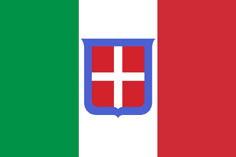
Nor in th' Italians brests extinguished.'
-Francesco Petrarcha (1304-1374)

-Benito Mussolini
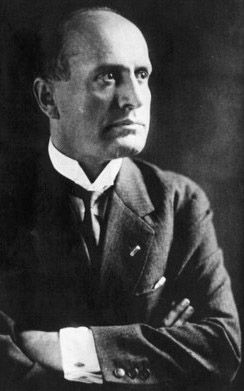
-Winston Churchill speaking in Rome on January 20, 1927.
Twelve years later Winston Churchill would align his country and people with the 'bestial appetites and passions of Leninism'.

After all, do you know the names of the killers? Most likely not.
And if by some cosmic oddity you do know their names, do you know their birthdays or the day they died?
Do you celebrate them as martyrs of truth who fought against the darkness?
Do you toast to their life and despise their deaths?
Do you enshrine pictures of them on your walls?
Do you take pilgrimages to their graves?
Do you march in their honor?
Do you seek out their words, and feel that they could have been written today?
Do you vow that one day truth will prevail, and we will build statues in their honor?
Do you fight for that day -- earning nothing but spiritual gold?
(WARNING: VERY GRAPHIC!)
'The Time of the Stick and the Carrot:
Story of a Year, October 1942 to September 1943'
First published in 1944, this book covers the bloody and decisive time from October 1942 to September 1943, written by Mussolini himself.
Illusion and lying are the basis of American interventionism-illusion that the United States is still a democracy, when instead it is a political and financial oligarchy dominated by Jews through a personal form of dictatorship.'
--Benito Mussolini, Rome, Italy, February 23, 1941, (speech excerpt)


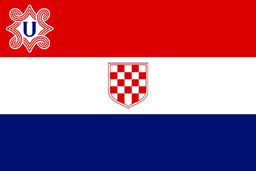
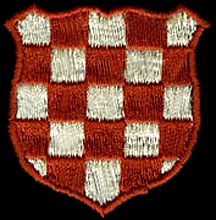
-(c)2007 Ch. Links Verlag, Berlin - The Unknown Eastern Front - The Wehrmacht and Hitler's Foreign Soldiers, Rolf-Dieter Müller, page 99
-(c)2007 Ch. Links Verlag, Berlin - The Unknown Eastern Front - The Wehrmacht and Hitler's Foreign Soldiers, Rolf-Dieter Müller, page 102
-(c)2007 Ch. Links Verlag, Berlin - The Unknown Eastern Front - The Wehrmacht and Hitler's Foreign Soldiers, Rolf-Dieter Müller, page 103
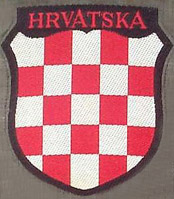
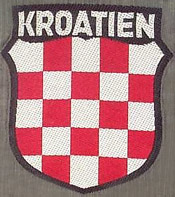

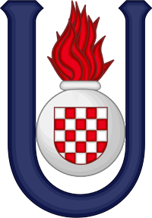
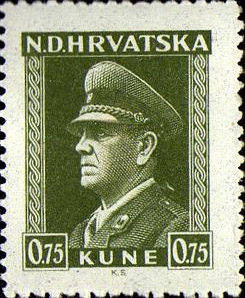
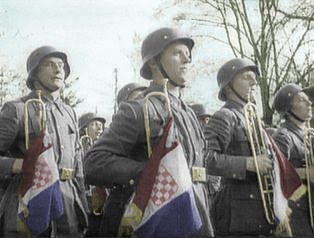
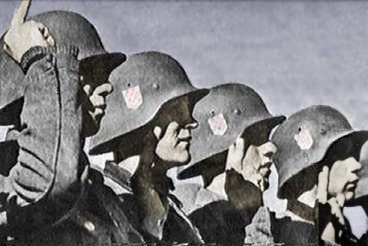
and obey the laws and unconditionally obey all orders of the Poglavnik (leader), that I will keep all secrets told to me unrevealed.
I pledge that in the Ustasha ranks I will fight for the Independent State of Croatia and execute all of what my Poglavnik orders.
I pledge that once the Independent State of Croatia has risen I will defend Croatian national freedom in the Ustasha ranks,
protect it and defend it. If I break this oath, I am aware of any mistake and misdeed, by Ustasha laws I will receive a death sentence.
May God Help me! Amen!'
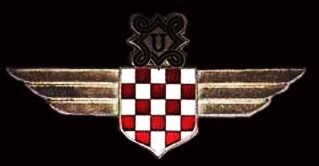
They should be bound directly to the Führer by an oath of loyalty.
Like that, one could rely upon them absolutely.
When I have Kvaternik standing in front of me,
I behold the very type of the Croat as I've always known him,
unshakeable in his friendships,
a man whose oath is eternally binding.'
--Hitler's Table Talk


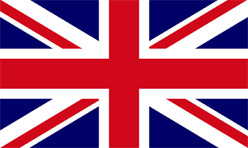
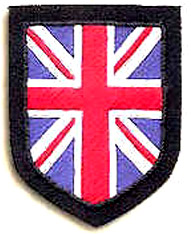
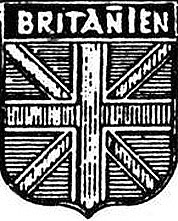
The British Free Corps: The Story of the British Volunteers of the Waffen SS, Robert A. Best, (c)2010 (ISBN 978-1904911906)]
In the closing days of WW2 these gallant men were joined with the Waffen-SS Division Nordland, at least one of whom died in the Battle of Berlin. There were volunteers from Ireland, South Africa, Australia, New Zealand and Scotland.
[Richard W. Landwehr, Britisches Freikorps: British Volunteers of the Waffen-SS 1943-1945, page 83, ISBN 978-1475059243]
A single soldier of the BFC, Kenneth Edward Berry, was captured during the battle and was interned. One of these men, a Corpsman named Eric Pleasants, would later heroically distinguish himself in the Battle of Berlin.


So much so that I thought that the people responsible in London were acting in a manner that no longer coincided with British imperial interests'
-John Amery
Because men have died, because men are exiled or languish in jail, that is all the more reason why we must carry on and even sacrifice ourselves, so that their love of peace, of human kindness, their ardent patriotism can find a worthy echo, a justification of the belief they placed on us collectively and individually.
It can never be treason, in war time or at any other time, to love ardently one's country and to take up arms because all the things that are sacred to us are being systematically violated. The public, the free Englishman, did not declare the war, but a disheartened old gentleman, pressed from all sides by the men who wanted this, the Jews. It killed him – remorse for the crime?... or because he was too old, too weary to fight on for the peace he did all he could to maintain. No one will ever know. But think of this terrible thought he must have had as he felt how all his attempts were systematically opposed, sabotaged and falsified by the creatures of the trusts, and above all, to the public, by the press, by the BBC.
The real traitors are in London. Those that barter away our Empire to maintain the premiership or other political functions. Those that ship their gold to America, our gold. Those that make fortunes out of the munitions industries, out of the black market, out of the sweat of our workers and the blood of our soldiers.
I make only one New Year's wish, it is this: that you will all realize in time, that you will act in time, so that never may come the day of the final, absolute, and irrevocable catastrophe, when you turn in the ashes of our possessions and of our honor by the cemeteries of those that have died so uselessly, and say: If only they had known!'
-John Amery, from a 1943 radio broadcast


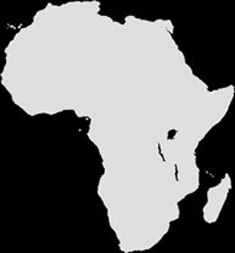


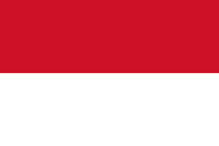
The red stands for courage, while the white stands for purity.
The red also represents the human body or physical life, while the white represents the human soul or spiritual life.
Together they stand for a complete human being.]
'The photo came from Mark Bando, the American researcher of American Airborne units. In the course of his research into the 101st Airborne Division, he met with Wilson Boback, who had fought in the Netherlands during Market-Garden in September 1944. Boback's unit came into contact with part of the Landstorm Nederland, and Boback killed a man from the LN and then searched his body. He took from it a photo of the man, who was obviously Indonesian (or part), which showed him in the uniform of the Legion Nederland (wolf's hook collar patch, Dutch made arm shield and cuff title), along with the flaming grenade helmet decal of the LN.']



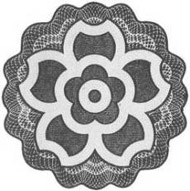


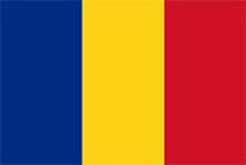
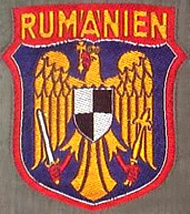
My Commando Operations: The Memoirs of Hitler's Most Daring Commando, page 307, by Otto Skorzeny, Schiffer Military History 1975/1995


He had wisdom and courage, dream and reality, physical strength and physical beauty
of the demigod, simplicity and gospel clarity...'
--Prince Michael Sturdza after his first meeting with Corneliu Codreanu.
--The famed writer Julius Evola, speaking of Codreanu.
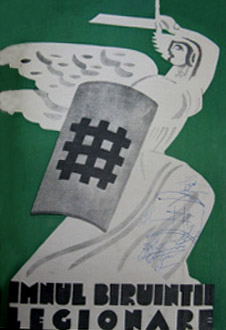

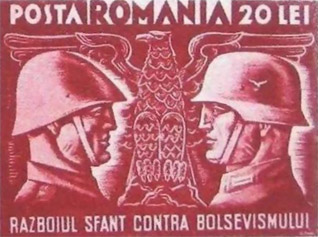




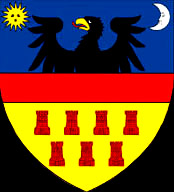
Their example was followed, in the opposite direction, by some members of the Hungarian 1st Armored Division,
mainly Transylvanian Romanians and Gypsies drafted from the division's baking company as replacements for the defense of the Buda bank.'
-The Siege of Budapest by Krisztián Ungváry, Pg. 169

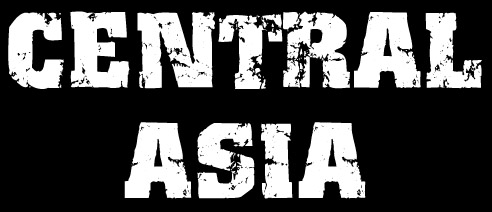
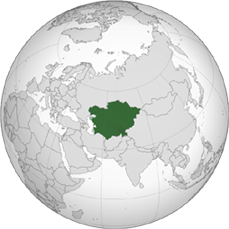
-Prophet Muhammad, Musnad Ahmad 18449
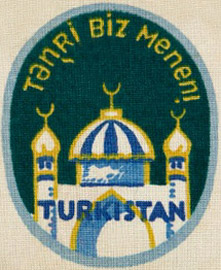
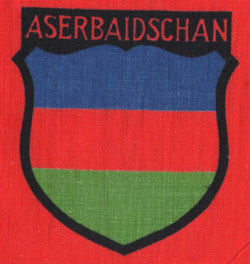
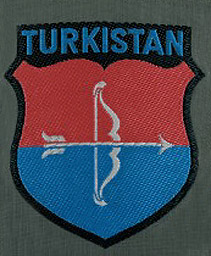



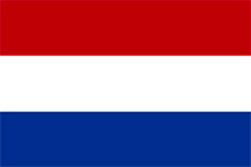
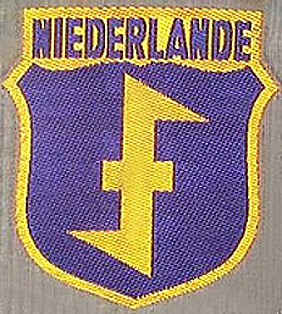

-NSB motto
This image is from a 1937 children's book from the Netherlands called 'De Appelboom' (The Apple Tree).
You have to wonder if the Judeo-American-British mass-murder bombing spree killed this particular child, as it killed untold others.
I am aghast at the fact that America and Britain actually made a policy to target civilians in their strategic bombing campaigns. Grisly evil.]


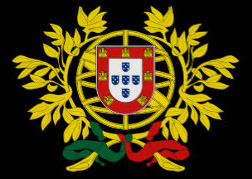
— António de Oliveira Salazar

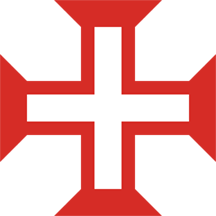
Preto's hard work and dedication earned him widespread respect and admiration. Representatives from both Fascist Italy and National Socialist Germany regularly attended rallies held by Preto. Defense groups, or Shock Brigades, were organized, and according to police reports the Lisbon Brigade or Brigada Negra (Black Brigade), was composed of sixty men.


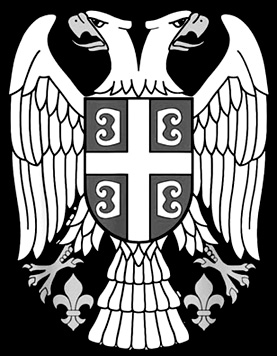
On December 24, 1941 the commander of a communist terrorist group was captured by the Chetnik unit of Kosta Pecanac. They turned him over to the government and was hung on May 27, 1942.
Click on the stamp to see a postcard with this vignette and a poster.]


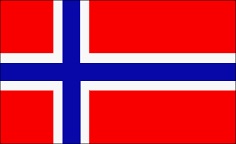
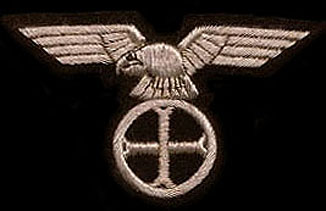
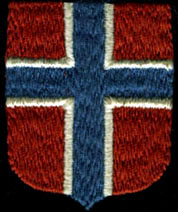

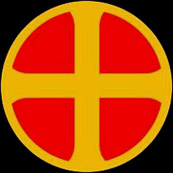

Marxism is a Jewish movement.
Marxism, on which the Norwegian Labor Party is building on, is a Jewish movement. Its only living conditions, its only chance is war.
The First World War gave the wind in its sails and it was during this war that Marxism prevailed in Russia.'
-Vidkun Quisling, October 21, 1935
He served in the military from 1911 until the mid-twenties, specializing in Russian affairs. Stationed in Russia, he saw first hand the Bolshevik plague.
In 1929 he returned to Norway and served as a diplomat and later Minister of Defense for two governments. In 1930 he wrote Russia and Ourselves, which spoke of the dangers of Bolshevism.
In 1933 he founded the Nasjonal Samling (National Unity) party. On Adolf Hitler's 50th birthday Quisling sent him a card thanking him for "saving Europe from Bolshevism and Jewish domination".
Quisling met Adolf Hitler on December 14, 1939. They two discussed a possible British invasion of Norway and the future of Nasjonal Samling.
On April 9, 1940, during the German invasion of Norway, he gained power in a coup d'état. From 1942 to 1945 he served as Minister-President.
At this post he made a single change to the constitution: a reinstatement of the ban on Jewish entry into Norway (which had been abolished in 1851).
His last years were a mixture of triumphs and tragedies. Despite his great love for Norway, many political obstacles remained unbeatable for Quisling.
He was murdered by firing squad at Akershus Fortress, in Oslo, on October 24, 1945.
His last words before being shot were,
'I'm convicted unfairly and I die innocent.'
]
But I want to let history reach its own verdict. Believe me, in ten years time I will have become another Saint Olav.'
-Quisling to Bjorn Foss, May 8, 1945
-Maria Quisling, his wife
-Bjorn Ostring, Norwegian politician under Quisling, Waffen-SS veteran of the Eastern Front

She was born in Stor-Elvdal. Halldis was a fervent Norwegian patriot.
Norwegian film director Arne Skouen called her 'Norway's most fanatical Nazi woman'.
She was a prominent member of Quisling's Nasjonal Samling party.
She was also the first chairman of the Lady's Ski club, and is credited as being 'very important for the women's ski sport development in Norway'.]


-Knut Hamsun's defiant closing words of his statement to the Norwegian Supreme Court after three years incarceration.



Frivillig kvinnelig
Arbeidstjeneste'
Women volunteers
Labor service).]
by the help of these systems and powers, Jewry hopes to be able to realize its ancient monomaniacal materialistic messiah dream
with Israel ruling over the other peoples with the help with capital from above and communism from below.
While National Socialism, wherever it prevails, sets a barrier to the destructive activities and world plans of the Jews.'
-Vidkun Quisling, speech of September 25, 1943



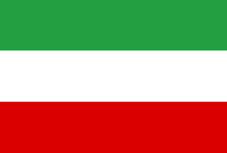

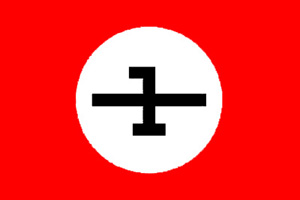


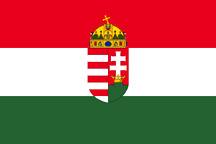


2) 310,000 Honved (Hungarian Army) personnel
3) 17,000 Hungarian personnel of the police and Gendarmerie.
4) 42,000 men of the 25th SS and 26th SS Infantry Division.
5) 14,000 men of the 22nd SS Volunteer Cavalry Division 'Maria Theresa.'
6) 8-11,000 men of the 31st SS Volunteer Grenadier Division 'Batschka.'
7) 3,500 men of the 1st Hungarian Battalion.
8) 5,000 men of the SS Brigade 'Ney.'
9) 250,000 Hungarian ethnic Germans.

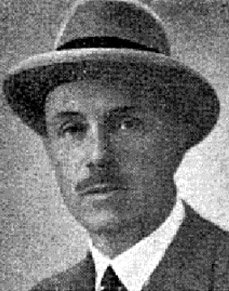

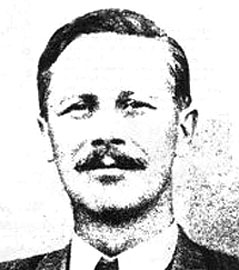
the ray of hope became a huge beam of light, the command of Ferenc Szálasi was given,
and frozen Hungarian hearts were flooded with warmth that gave life.
He filled all Hungarians with a proud self-awareness that the nation chose honest struggle instead of dishonest destruction,
loyalty instead of betrayal, Szálasi instead of Stalin.'
--Speech by Sándor Jia at the Grand Council of the Arrow Cross Party in December 1944


-Signal magazine, English edition.]


A shocking image immediately after the battle: the prisoners throwing up their arms, break out into jubilant cries of "Heil" for Germany and curse the Soviet regime in bitter tones.
They are the freedom-loving sons of the peoples of the Caucasus who were forced to fight in the Bolshevik army'
- Berliner Illustrierte Zeitung, number 1, January 7, 1943.]


It was catastrophic, half of the Volga Tatar population in the USSR died. The 1921–1922 famine in Tatarstan has been likened to the Holodomor genocide in Ukraine.
-Signal magazine, English edition.]
The stones will (betray them) saying, 'O 'Abdullah! There is a Jew hiding behind me; so kill him.'
Sahih al-Bukhari, Volume 4, Book 52, Number 176,
narrated by Abdullah bin Umar


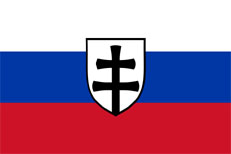
Germans - 3,218,000
Slovaks - 2,309,000
Magyars (Hungarians) - 720,000
Ruthenes - 569,000
Poles - 100,000
Others - 266,000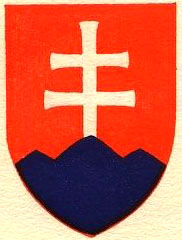


At war's end the communists staged a mock trial and found him guilty of the typical lies and hung him on August 20, 1946. Hanging a man in a wheelchair? Pretty damn noble of them, eh?





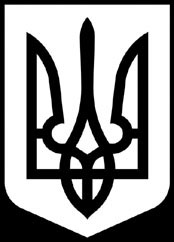
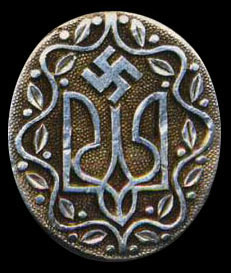
-Signal magazine, English edition.]
It says:
'Help us with the fight for victory!
We must set to [work], Galician compatriots!'.]
'We Go Into Battle' and the subtitle is: 'Infantry SS Division "Galicia"']

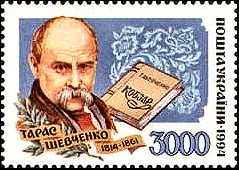
A rich man's life is spent
Without a friend or faithful love --
Those things he has to rent.
Don't envy, friend, a man of rank,
His power's based on force.
Don't envy, too, a famous man:
The man of note well knows
The crowd's acclaim is not for him,
But for that thorny fame
He wrought with labor and with tears
So they'd be entertained.
But then, when young folk gather 'round,
So fine they are and fair
You'd think it's heaven, -- ah, but look:
See evil stirring there...
For if you look you'll find
That there's no heaven on the earth,
No more than in the sky.'

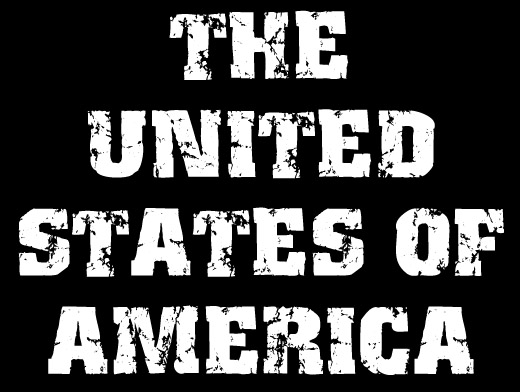
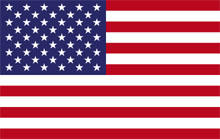

With words and deeds and song.
For honesty and human right
We stand, and not for wrong
All true friends of New Germany,
And this with pride we say,
Are Friends of Peace, will always be Friends of the U.S.A.'
-A song of the German-American Bund
